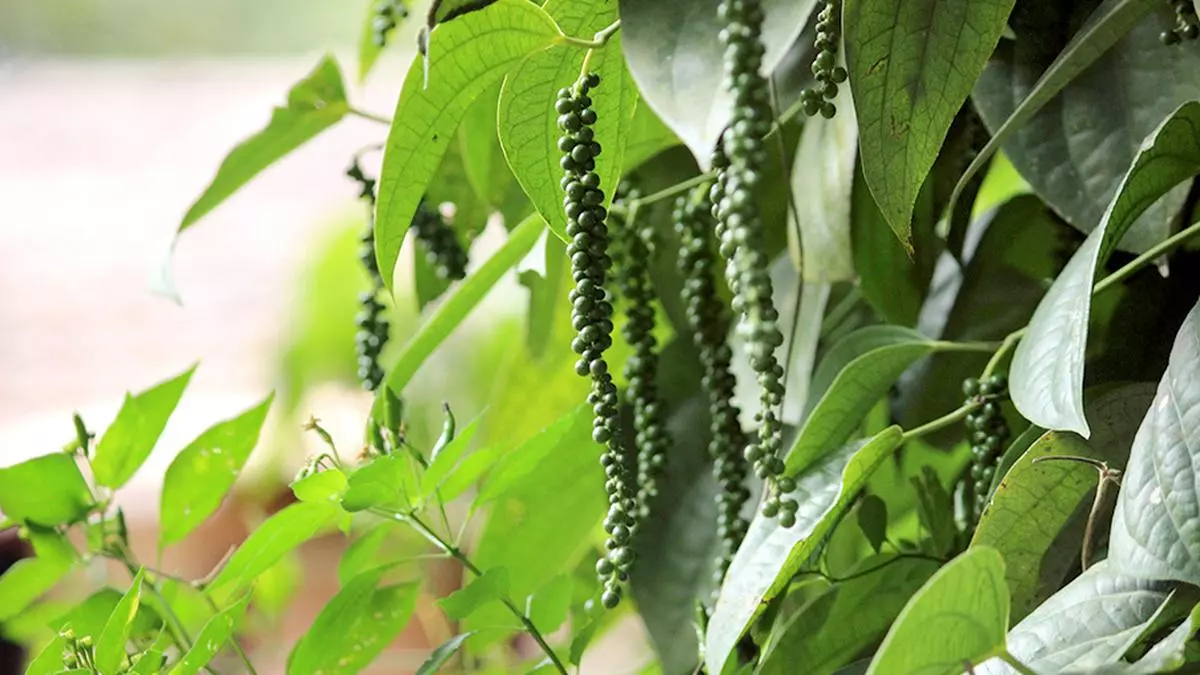As global pepper market turns hot, doubts linger if rising prices boost India’s exports
Rising prices across all pepper origins worldwide have raised the hopes of Indian producers to reap gains by catering to the demand from the US and European consuming industries.
However, whether India will be able to meet the emerging demand is a big question mainly because of the tight availability of the commodity in the domestic market. Sources in the sector said farmers and dealers are holding back their crop from further sales which is a natural phenomenon in a surging market. Speculative buying on credit at higher price levels also influences the market to trade higher.
Pepper prices in India are now hovering at ₹685 for ungarbled grade in the Kochi terminal market, while the garbled rates stood at ₹705 ($8,975 per tonne). Prices in the global markets are Vietnam ($8,200), Sri Lanka ($7,800), Indonesia ($8,200) and Brazil ($8,000).
Kishor Shamji, Director of Indian Pepper &Spices Trade Association, cited several factors for the prices to move up which included heavy rains in Sri Lanka and delays in shipments to meet the global supply. There are also reports that some lots have been found with high moisture content and the presence of mold that reportedly forced the end users to reject some consignments. The end users who rejected such consignments are on the lookout for replacement, which will offer a market for the Indian produce.
At a deficit
Emmanuel Nambusseril, Vice Chairman, All India Spices Exporters Forum, said Indian pepper prices are going up taking cues from international markets, but it is still higher compared to the price of Vietnam. Black pepper crop in India is estimated to be around 60,000 tonnes in 2024, while the internal consumption itself is around 66,000 tonnes, a deficit.
He said exports of Indian pepper are not going to benefit, as the country needs to import from Sri Lanka and Vietnam to fill the gap for domestic consumption as well as for the export of value-added products. There is a slight increase in the crop quantity in 2024 compared to 2023 — around 6 per cent. However, the carryover stock is expected to be lower than last year.
Consumption up
As the prices are moving up daily, Shamji said the consuming industry is in a hurry to cover the market. Pepper consumption in the domestic market has gone up thanks to changing food habits and increased demand from masala makers, condiments etc.
On the production side, Shamji said Sri Lanka is in a harvesting mode and Indonesia will be the next which will be followed by Brazil. Vietnam and Cambodia are already in the supply chain, while China appears to be not very aggressive in the procurement.
“Indian pepper prices is at a par with Vietnam and other countries for the first time in six years. As a result, imports will turn expensive and may slow down,” said Pradeep Poovayya, executive committee member of Codagu Planters’ Association. “We could be export surplus too as we had a good crop,” he added.
